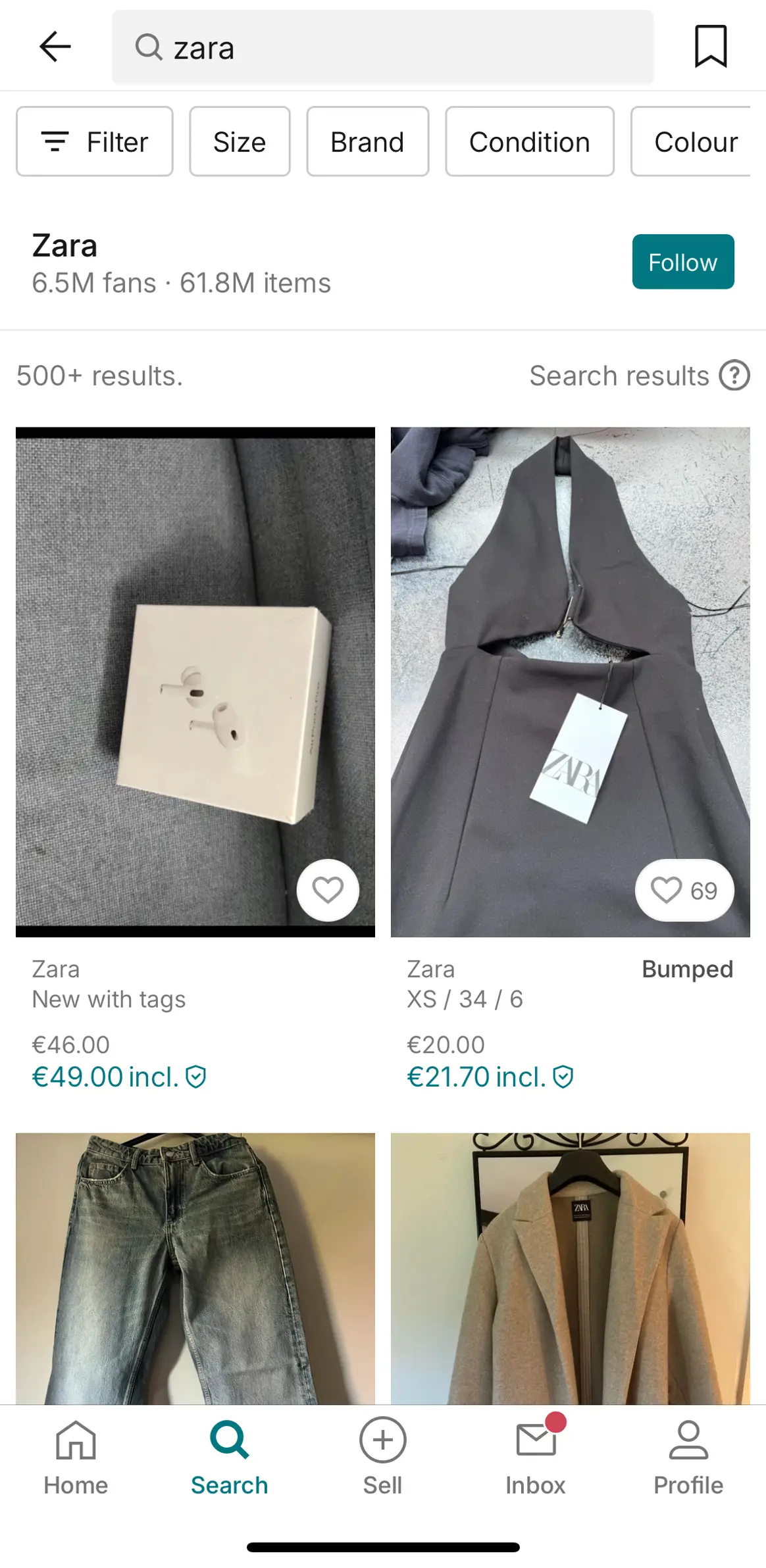Engaged in the clothing industry for 20 years.

With 61.8m Zara items on sale at Vinted, is circular fashion in trouble?
The substantial presence of 61.8 million Zara garments on Vinted, the popular online secondhand marketplace, presents a complex picture of consumer behaviour, fast fashion, and sustainability efforts in the retail sector. Similarly, the platform lists 59.7 million H&M items, 21.8 million Shein pieces, 21 million Primark items and 10.2 million Mango items.
On one hand, this figure underscores the sheer scale of Zara and other corporate giants’ production capabilities and their dominance in the fast fashion industry. The Spanish retailer, owned by Inditex, like its peers, has long been known for its rapid turnover of styles and ability to quickly respond to fashion trends. The high volume of items available on Vinted, one of many resale platforms, suggests that consumers are indeed purchasing these garments in gargantuan quantities, and most importantly that have a short desirability lifespan for the buyer.
Short desirability lifespan
The prevalence of these items on a resale platform also indicates a growing trend towards circular fashion. Consumers appear to be increasingly conscious of extending the lifecycle of their clothing, rather than discarding items after limited use. This shift aligns with broader sustainability goals and could be seen as a positive step towards reducing fashion’s environmental impact. Yet circular fashion should have at its premise that good quality clothing lasts more than one season, not for fast fashion brands to churn out hundreds of millions of mostly polyester made clothes every year to remain unworn.
Fashion entrepreneur Stuart Trevor, founder of high street brand All Saints and sustainable vintage brand Stuart Trevor, tracked the amount of Zara items listed on Vinted across 77 days between March and June. Sharing the findings on LinkedIn, Mr Trevor’s data shows they increased from 52.4 million at the end of March to 61 million in mid June, increasing by an average of 100,000 items a day.
The situation raises questions about the efficacy of such secondhand markets in truly addressing sustainability concerns. While extending the life of garments is beneficial, the sheer volume of items suggests that overproduction and overconsumption remain significant issues. It could be argued that the ease of reselling may inadvertently encourage further consumption, as buyers might feel less guilty about purchasing new items if they plan to resell them later.
Reselling may encourage consumption
As the fashion industry grapples with its environmental footprint, the role of secondhand marketplaces like Vinted will likely continue to evolve. While they offer a partial solution to fashion waste, more comprehensive changes in production, consumption, and disposal patterns are necessary to achieve true sustainability in the sector. Mr Trevor’s namesake label, for example, re-works vintage pieces without creating new clothes, instead reimagining garments with care, be they patched, printed, sprayed, re-cut, washed or embroidered.
Ultimately, the high volume of Zara and fast fashion garments on Vinted reflects the complex interplay between consumer behaviour, corporate responsibility, and environmental concerns in the modern fashion landscape. As pressure mounts for more sustainable practices, both retailers and consumers will need to reassess their approaches to production, consumption, and disposal of clothing.



